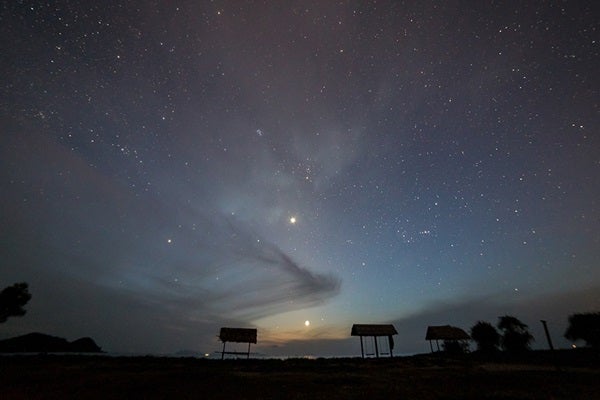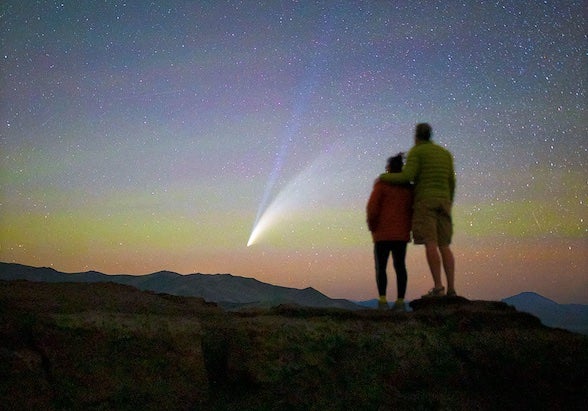With the advent of Daylight Savings Time, it becomes a bit easier to view Venus in the morning sky this week.
Before Daylight Savings Time began, the brilliant planet rose shortly after 4:30 a.m. local time and the Sun overwhelmed it by 6 a.m.
Now, you can add an hour to those times and more easily catch a peek before you head to work or school.
Venus shines at magnitude –4.0, which makes it the brightest point of light in the sky. When viewed through a telescope this morning, Venus’ disk spanned 15″ and appears three-quarters lit. Keep an eye out for the planet in the southeastern sky before dawn.
Later this week, you’ll be able to catch three planets – Venus, Jupiter, and Saturn – all evenly spaced in the morning sky.










